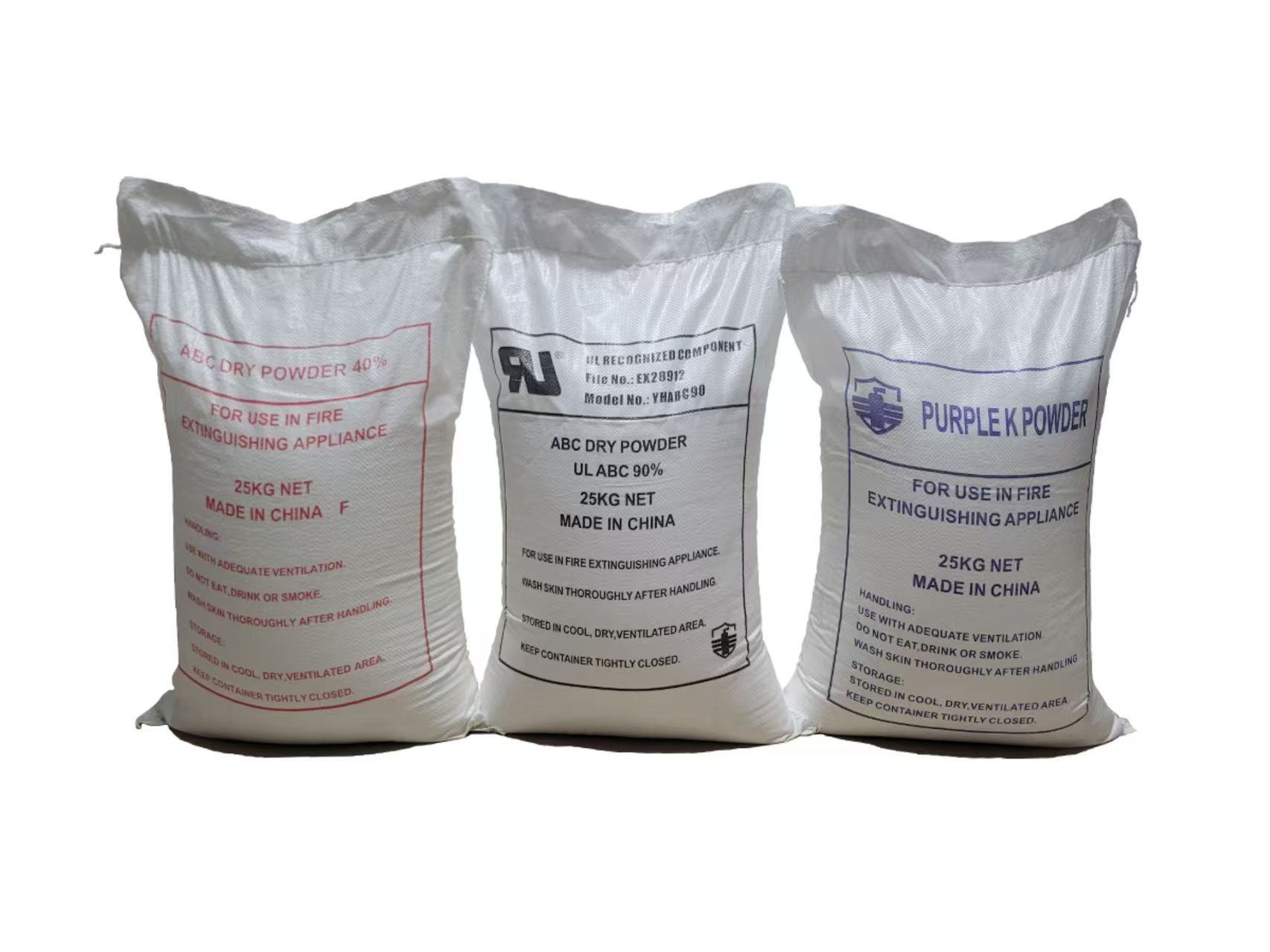Common Misconceptions When Using Powder Fire Extinguishers and How to Avoid Them
Powder fire extinguishers are an essential safety tool in homes, offices, factories, and other spaces. They’re versatile, effective, and easy to use, but many people make common mistakes when operating them, which can reduce their effectiveness and even create safety risks. Understanding these mistakes and how to avoid them is key to ensuring that your dry powder fire extinguisher works properly in an emergency.
In this post, we’ll discuss the most common misconceptions about using powder fire extinguishers and provide tips on how to avoid them.

1. Incorrect Targeting of the Fire
The Mistake:
When using a fire extinguisher, many people instinctively aim at the top or middle of the flames, thinking they can quickly put out the fire by targeting the top.
The Correct Approach:
Always aim at the base of the fire — the source of the flames. Targeting the base is essential because it stops the fire from spreading and attacks the root of the blaze. By focusing on the base, you prevent the fire from growing and contain it more effectively.
2. Using the Wrong Type of Extinguisher
The Mistake:
Sometimes, people use powder fire extinguishers for fires they are not designed to handle, such as electrical fires or oil fires. This can worsen the situation, as powder extinguishers aren’t suitable for these types of fires.
The Correct Approach:
Powder fire extinguishers are effective for Class A (solid), Class B (liquid), and Class C (gas) fires. However, for oil fires, electrical fires, or metal fires, you should use other types of extinguishers such as CO₂ extinguishers or K-class extinguishers. Always check the label on your fire extinguisher to ensure it's appropriate for the type of fire you're dealing with.
3. Failing to Check the Condition of the Extinguisher
The Mistake:
People often forget to check the pressure gauge or overall condition of the extinguisher before use. A fire extinguisher that’s low on pressure or expired may fail when needed most.
The Correct Approach:
Make it a habit to check the pressure gauge regularly. The needle should be in the green zone, indicating that the extinguisher is properly pressurized. If the needle is in the red zone, the extinguisher needs to be recharged. Additionally, inspect for any damage or wear to ensure the extinguisher is in optimal condition.
4. Overusing the Fire Extinguisher
The Mistake:
In panic situations, many people try to spray the entire contents of the extinguisher at once, thinking it will quickly extinguish the fire. However, this depletes the powder too soon and can leave you with an ineffective extinguisher when the fire isn’t fully out.
The Correct Approach:
When using a powder fire extinguisher, use short bursts and aim at the fire’s base. Keep a steady, controlled sweep from side to side to cover the entire fire. By using the extinguisher in this manner, you can conserve the powder and ensure it lasts until the fire is completely out.
5. Pointing the Nozzle Toward Yourself
The Mistake:
In a panic, some people point the nozzle of the extinguisher toward themselves or others. This can not only hinder the effectiveness of the extinguisher but can also expose you to fire or the dry powder.
The Correct Approach:
Always point the nozzle toward the fire and not towards yourself or anyone else. Ensure you're standing at a safe distance from the fire when using the extinguisher, and aim carefully to avoid blowing powder toward your face or body.
6. Neglecting to Clean Up Residual Powder
The Mistake:
After using the fire extinguisher, people sometimes ignore the dry powder left behind. This powder can cause corrosion to sensitive equipment, especially electrical devices, and can be harmful to health if not cleaned properly.
The Correct Approach:
After using a fire extinguisher, be sure to clean up the dry powder residue as soon as possible. If the fire involved electrical equipment, make sure to clean thoroughly to prevent any powder from corroding the machinery. Open windows for ventilation to avoid inhaling the dust and ensure the area is safe.
7. Storing the Extinguisher in the Wrong Place
The Mistake:
Many people store their fire extinguishers in places that are hard to reach or hidden, which wastes valuable time during an emergency.
The Correct Approach:
Fire extinguishers should be stored in easily accessible, visible locations, ideally mounted on a wall at a height that allows quick retrieval. Avoid placing them in closets or behind obstructions. The extinguisher should also be stored in a dry, cool area, away from extreme temperatures or humidity.
8. Neglecting Regular Maintenance and Inspections
The Mistake:
Some individuals assume that as long as a fire extinguisher looks fine, it doesn’t need regular checks or maintenance. Over time, however, extinguishers can lose pressure or develop issues that make them ineffective.
The Correct Approach:
Make sure to inspect your fire extinguishers at least once a year. Check the pressure gauge, ensure the safety pin is intact, and look for signs of wear or damage. If the extinguisher has been used, it should be recharged immediately. Regular professional servicing is also recommended every 5 years or as per the manufacturer's guidelines.
Conclusion
Understanding the common mistakes people make when using powder fire extinguishers is crucial for improving safety and ensuring effective fire suppression. By following the correct usage procedures, performing regular checks and maintenance, and choosing the right type of extinguisher for the situation, you can greatly increase your chances of successfully putting out a fire and protecting your property.
Fire safety is all about preparation, and by staying informed about proper extinguisher usage and maintenance, you’ll be ready when an emergency arises. Stay safe and always be prepared!

